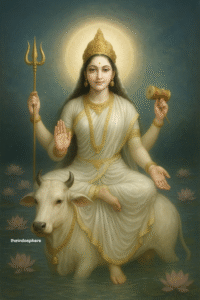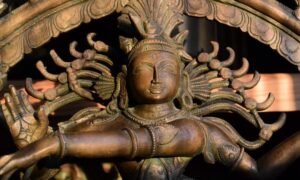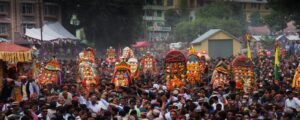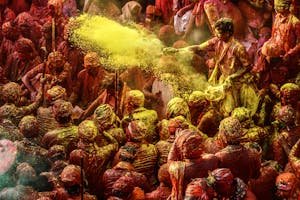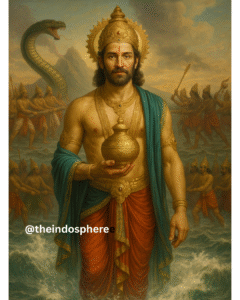Navratri – A Deep Dive into India’s Festival of Nine Nights
Navratri is one of the most widely celebrated and significant Hindu festivals in India, observed with great fervor across different regions. The word “Navratri” comes from the Sanskrit words “Nav”, meaning nine, and “Ratri”, meaning nights, which together symbolize a festival lasting nine nights and ten days. It’s a period dedicated to worshipping the nine different forms of Goddess Durga, who represents feminine energy or Shakti (power).
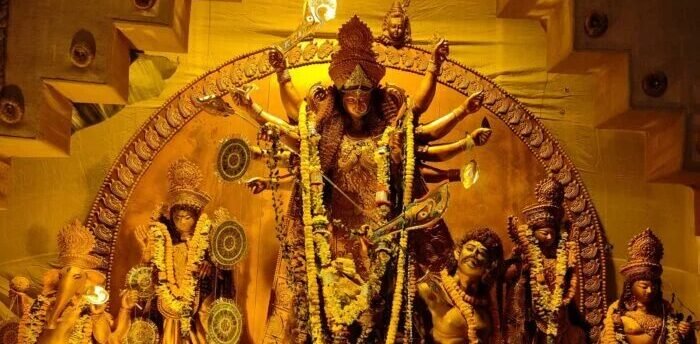
In this guide, we’ll explore Navratri’s origins, significance, rituals, regional variations, and how it is celebrated today. Whether you’re entirely unfamiliar with this festival or just seeking a deeper understanding, this article will provide a detailed explanation of Navratri.
Origins of Navratri Festival
Navratri’s roots are deeply embedded in Hindu mythology. The festival’s primary focus is the veneration of Goddess Durga and her victory over the buffalo demon Mahishasura, symbolizing the triumph of good over evil.
The Story of Durga and Mahishasura:
Mahishasura, a demon, was granted a boon by Lord Brahma that no man or deity could kill him. Empowered by this, Mahishasura wreaked havoc on Earth and heaven. Unable to stop him, the gods combined their powers to create Durga, a powerful goddess. Durga fought Mahishasura for nine days and nights, finally defeating him on the tenth day, known as Vijayadashami or Dussehra.
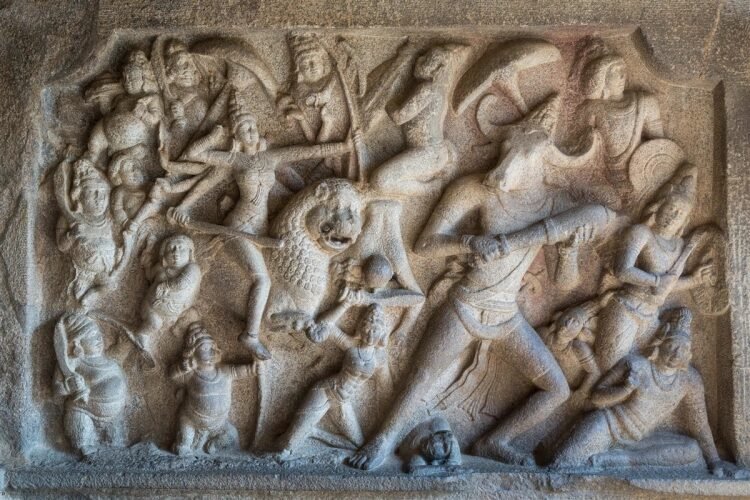
Significance of Navratri
Navratri symbolizes the victory of light over darkness, knowledge over ignorance, and good over evil. Each day of the festival is dedicated to a different form of Goddess Durga, and the entire period is regarded as a time for spiritual reflection, prayer, and inner cleansing. The festival also signifies the balance between power, protection, and nourishment, qualities that the goddess embodies.
The Nine Forms of Goddess Durga Worshipped:
- Shailaputri: The first form, symbolizing the daughter of the mountains.
- Brahmacharini: The goddess of penance and devotion.
- Chandraghanta: Known for peace and serenity, with a crescent moon on her forehead.
- Kushmanda: Creator of the universe with her divine smile.
- Skandamata: Mother of Lord Skanda (Kartikeya).
- Katyayani: Born to the sage Katyayana, the warrior goddess.
- Kalaratri: The fiercest form of Durga, representing destruction of evil.
- Mahagauri: Symbolizes calmness and wisdom.
- Siddhidatri: Bestows supernatural powers or siddhis to her devotees.

Rituals and Customs of Navratri
Navratri is observed differently across regions, but there are some common elements:
Fasting
Many devotees fast during Navratri as a way of purifying the body and mind. The fasting rules can vary:
- Some people eat only fruits, milk, and water.
- Others avoid grains and certain vegetables.
- The consumption of onion, garlic, and meat is strictly avoided.
Altar and Durga Puja
People set up an altar (in their homes or temples) with an idol or image of Goddess Durga. They offer flowers, incense, fruits, and sweets, and chant hymns or prayers to invoke the goddess’s blessings.
Garba and Dandiya Raas (Dance Forms)
In Gujarat and Maharashtra, Navratri is synonymous with vibrant dance forms called Garba and Dandiya Raas.
- Garba: A circular dance performed by women around a garbi (an earthen pot with a lamp symbolizing the universe).
- Dandiya Raas: A dance using sticks, where men and women form two circles and dance to rhythmic beats.
Kanya Pujan
On the eighth or ninth day, young girls (considered to be incarnations of the goddess) are invited to homes, and they are honored with food, gifts, and money. This ritual is called Kanya Pujan and emphasizes the reverence for feminine power.
Devotional Songs and Bhajans
Throughout the nine days, hymns, bhajans (devotional songs), and mantras dedicated to Goddess Durga are sung. Temples are decorated with flowers, and special pujas (prayer rituals) are performed to invoke her blessings.
Regional Variations in the Celebration of Navratri
Though Navratri is celebrated across India, different states and communities have unique customs:
Gujarat
- Gujarat’s Navratri is famed for its Garba and Dandiya Raas nights. Entire communities come together to dance around the image or idol of the goddess. The festival is not only a religious event but also a cultural one, with people wearing colorful traditional outfits and jewelry.
West Bengal – Durga Puja
- In West Bengal, Navratri coincides with Durga Puja, a major festival celebrating the goddess’s victory over Mahishasura. Idols of Durga, along with her children (Lakshmi, Saraswati, Ganesha, and Kartikeya), are elaborately crafted and worshipped for several days. The festival ends with Sindoor Khela (a ritual with vermillion) and the immersion of the idols in water.
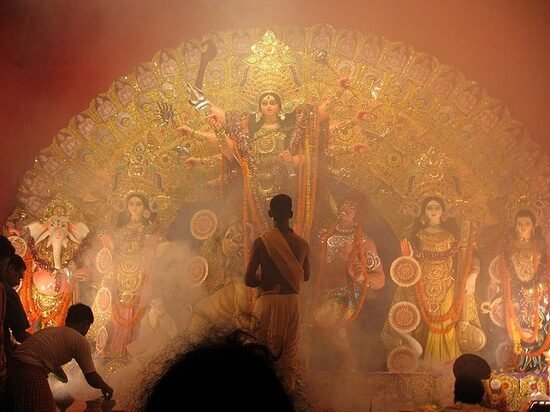
South India
- In southern states like Tamil Nadu, Andhra Pradesh, and Karnataka, Navratri is marked by the Bommai Golu tradition, where dolls depicting various deities, scenes from epics, and daily life are arranged on a stepped platform and displayed in homes. Friends and family visit each other’s homes to admire the dolls, and special foods are prepared and shared.
Northern India
- In northern India, Navratri is celebrated with Ramlila performances—plays depicting the life of Lord Rama and his battle with Ravana. The festival culminates with Dussehra, where large effigies of Ravana are burned to mark Rama’s victory.
Navratri in Modern Times
In contemporary India, Navratri remains a vibrant celebration that blends traditional practices with modern festivities. Many cities host large-scale Garba and Dandiya events, with live music, DJs, and competitions. The festival is also increasingly commercialized, with brands launching Navratri-themed campaigns, sales, and products.
At the same time, Navratri retains its spiritual significance. Many Hindus use this time for introspection, self-discipline, and seeking divine blessings. Temples across the country are filled with devotees offering prayers and seeking protection from evil forces.
Celebration of Shakti – The Divine Feminine
Navratri is a celebration of the divine feminine, the victory of good over evil, and the unity of cultural diversity within India. For nine nights, people come together to honor Goddess Durga through dance, music, fasting, and prayer. Each region adds its flavor to the festival, making it one of the most culturally rich and spiritually profound celebrations in the Hindu calendar.
Whether experienced in the vibrant Garba dances of Gujarat, the grand Durga Puja of Bengal, or the peaceful prayers of households across India, Navratri leaves a lasting impression of devotion, energy, and joy. If you’re new to the festival, participating or observing it in any form is a fantastic way to immerse yourself in India’s cultural and spiritual tapestry.

